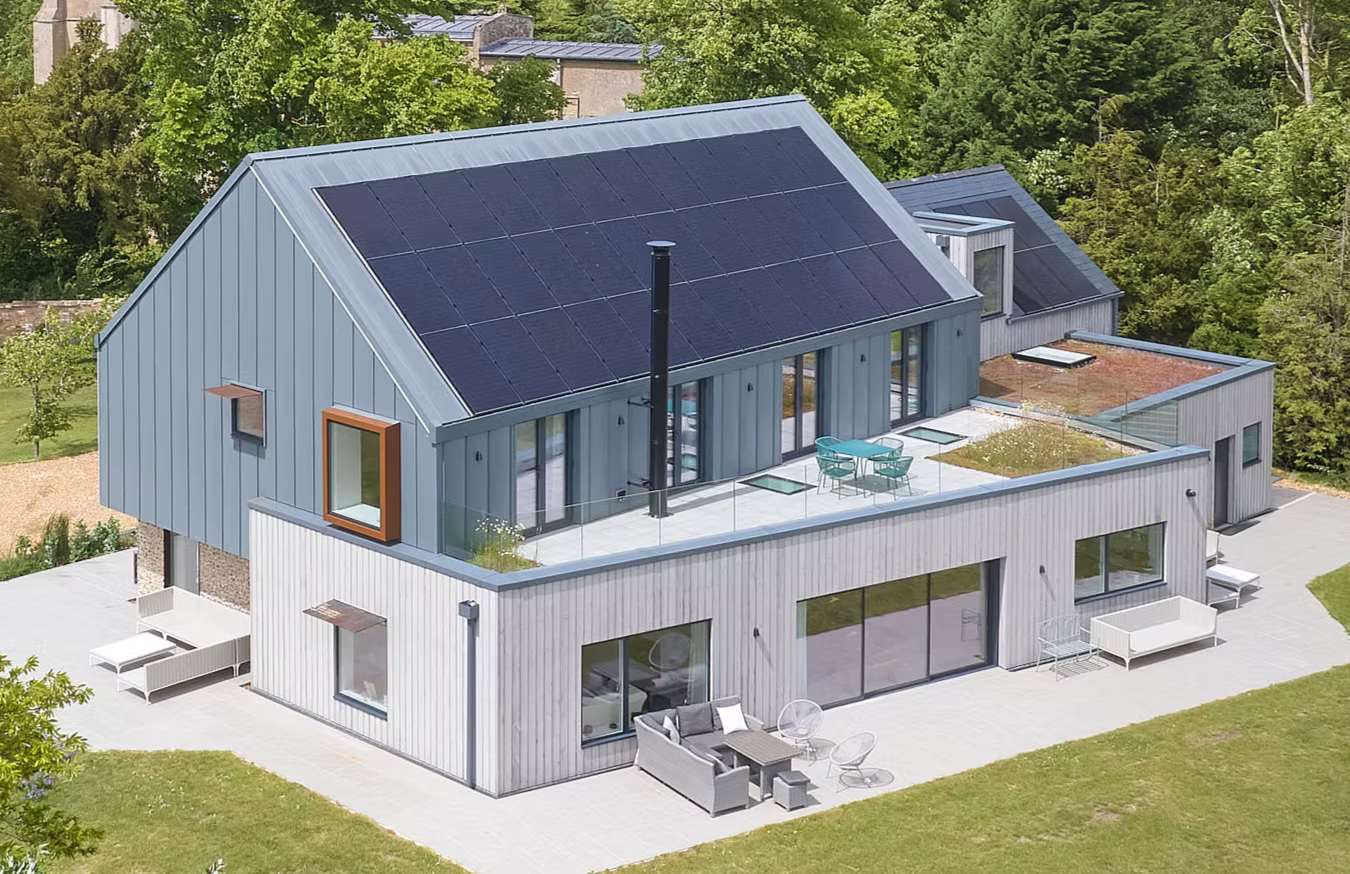
This article was co-created with our partners at PiP Architecture, following their recent feature on sustainable design at Church Lane, where Baulogic technology played a central role.
Our homes are becoming more advanced than ever. Ground source heat pumps, solar panels, battery storage, and mechanical ventilation systems all promise greater efficiency and reduced environmental impact. But while these technologies are powerful individually, they rarely work in harmony.
Solar panels might generate energy while batteries remain uncharged. A heat pump may run at peak tariff times. Ventilation systems can even compete with heating. Without intelligent control, homeowners are left managing multiple apps, systems, and settings just to keep everything running smoothly.
That’s where Baulogic comes in.
The Power of Connection
True sustainability comes from integration - connecting all the home’s technology through one intelligent, hard-wired system that ensures every component works together efficiently.
At Church Lane in Cambridgeshire, designed by our partners PiP Architects, Baulogic was installed to bring simplicity and intelligence to a home filled with renewable technology.
The property features ground source heating, solar panels, battery storage, and greywater recycling. Yet for the homeowners, managing it all is effortless. They can select “Family Visit” or “Holiday” mode, and Baulogic automatically adjusts heating, shading, and ventilation while optimising renewable generation and storage in the background.
The result is a home that produces more energy than it consumes, achieves an exceptional EPC rating of 102, and provides comfort without constant intervention.

Sustainability, Simplified
Baulogic’s approach makes sustainable living effortless. By connecting all of the home’s technology into one reliable infrastructure, it ensures renewable systems work in balance - maximising efficiency, reducing waste, and minimising energy bills.
For homeowners, that means a comfortable, efficient home that runs itself.
For developers, it means creating properties that are future-ready, more attractive to buyers, and built around long-term value rather than short-term fixes.

With renewable technology becoming standard in new builds, the next step in sustainable design is ensuring these systems communicate intelligently. Hard-wired integration - without locking into a single manufacturer - will soon be as essential as energy performance standards.
Baulogic is built for that future. It’s a flexible, connected infrastructure that turns isolated renewable technologies into a single, responsive ecosystem - enabling homes that are both environmentally sustainable and effortless to live in.
Baulogic: powering the next generation of sustainable living.
More Insights



.png)
